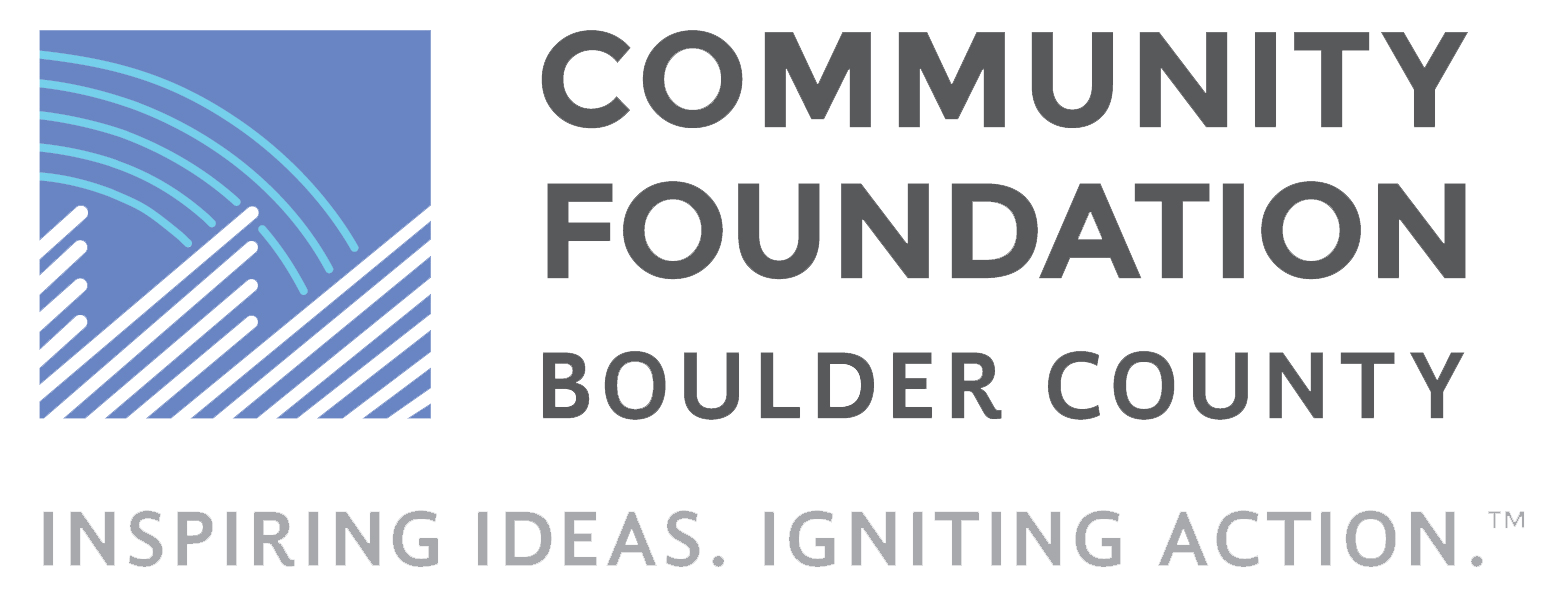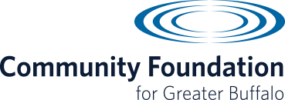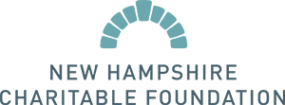
Why it matters
Government policies and programs affect almost every aspect of our lives, from housing, healthcare and the environment to education, transportation and safety. If we want to create equitable, inclusive and prosperous communities, it is necessary to focus on strengthening and/or reimagining policies and systems.
Government expenditures dwarf all grantmaking from philanthropy. Therefore, philanthropy’s greatest impact is in helping to shape and influence the public policies and systems that have such a big impact on people’s lives. This role is embraced by the general public and also appears to have the support of donors:
- 78% of voters want the charitable sector to play a larger role in helping the federal government solve problems.1
- 70% of voters would support a candidate for president who supports policies that allow greater participation by the charitable sector in the policy-making process.2
- 30% of community foundation leaders said they gained more donors than they lost as a result of their policy work, while 70% said they neither gained nor lost a substantial number of donors.3
Influencing public policy & systems matters to community foundations because they are uniquely positioned to do so. Unlike private foundations, community foundations are legally allowed to participate in and fund a limited amount of lobbying, including supporting charities that lobby, and are also allowed to conduct and fund a wide range of non-lobbying advocacy activities. Their local connections, knowledge and resources give them the power to leverage long-lasting change in their communities.
Webinar – Influencing Public Policy & Systems
What we’re finding
Community foundations are commissioning and sharing local data, mobilizing stakeholders across sectors, and advocating for public policy change.
Commissioning and Sharing Local Data
For many years, community foundations have been commissioning and producing important research on local indicators and issues of community concern, from equity and education to health care and housing. Our research indicates that this important work will continue, with 41% of community foundation survey respondents stating they plan to increase their staff allocation for commissioning research over the next two to three years.
Change in staff allocation by activity over the next 2 or 3 years
With their unique status as place-based institutions, community foundations are well-positioned to commission and share local data with the community. The Community Foundation for Northern Virginia is one of several community foundations that has launched separate research institutes for community data and report writing. The Greater Cincinnati Foundation uses research and data to inform the community about its work through its All-In Cincinnati, Giving Black, and Women’s Fund PULSE reports.
In Florida, the Community Foundation of Collier County produces a Vital Signs report every year, providing a data-rich, objective look at the county. In Texas, the Greater Houston Community Foundation launched a new Understanding Houston portal in 2019, providing the region’s first comprehensive set of indicators to inform and track local progress. In California, the Napa Valley Community Foundation made a multi-year investment to support Legal Permanent Residents wishing to become citizens after it commissioned a study on the economic and fiscal impact of immigration in Napa County. To date, more than 1,550 people have been naturalized through the One Napa Valley Initiative.
Other community foundations are using data to better understand their transnational communities by participating in mapping projects through the Building Broader Communities in the Americas initiative.
This data work is often an important component that intersects with the three areas of momentum outlined on this portal. Foundation for the Carolinas is an organizational partner for Leading on Opportunity, an economic mobility initiative that uses community-informed strategies to engage diverse voices, amplify stories and data, and influence policies and practices leading to transformative change.
Promising Illustrations

The Boston Foundation
The Foundation hosts Boston Indicators, an in-house research department that annually generates several major publications and curates ongoing data maps and tools. These efforts inform local policy discussions, program investments, and trailblazing advocacy efforts that have influenced the passage of more than a dozen state laws.
Visit Their Website
Community Foundation Boulder County
Since 1996, Boulder’s TRENDS report has informed and engaged Boulder County residents and civic leaders on the community’s most pressing needs, relying on 150 indicators of social, economic and environmental health, plus in-depth community reporting. The biennial magazine has recently expanded to include a podcast, a community diary, a reporting fellowship and a solutions fund.
Visit Their WebsiteMobilizing Stakeholders Across Sectors
Community foundations can leverage their convening role—also used for amplifying community voice—to bring together community stakeholders who wield power and influence to enact large-scale change. They can offer a meeting ground where business, government, academic, and community leaders across all walks of life can associate and share ideas and aspirations for the community. In fact, 77% of community foundations say they will be dedicating additional resources to cross-sector partnerships—more than to any other activity listed in our survey.
Community foundations mobilize these stakeholders around a wide range of issues. For example, the North Texas Community Foundation convened 65 key leaders across government and nonprofit sectors to discuss foster care in the Fort Worth region, creating a framework for a complete overhaul of the statewide system. In Minnesota, the Southwest Initiative Foundation partnered with Government Alliance on Race and Equity (GARE) and the League of Minnesota Cities to bring together institutional stakeholders such as elected officials, city administration, school personnel and other local community leaders to analyze policies and practices that create barriers to racial equity and explore how to remove them.
In California, the Central Valley Community Foundation is a lead funder of Fresno DRIVE, an exhaustive community process involving 150 civic entities and community-based organizations working together on a 10-year investment plan to reduce economic racial disparities in Fresno. Further down the coast, the San Diego Foundation is tackling climate change in collaboration with others, forging more than 50 cross-sector partnerships in the last 15 years.
We have also seen this cross-sector engagement take place in recent months as communities work to respond to the COVID-19 pandemic. The Greater Milwaukee Foundation has put together a Civic Response Team made up of government, philanthropy, educators, nonprofits, healthcare and community representatives who are taking a collective approach to address the pandemic.
Issues such as climate change cross regional boundaries and state lines. In response, community foundations are increasingly exploring opportunities for collective action, both with external stakeholders and with community foundation counterparts. The Great Lakes One Water Partnership brings shoreline philanthropies together around water management, and the Community Foundation Opportunity Network was formed to join forces around reducing the youth opportunity gap in U.S. communities.
Promising Illustrations

Community Foundation for Greater Buffalo
Say Yes Buffalo, convened by the Community Foundation, includes more than 200 public, private, and nonprofit partners committed to strengthening Western New York’s economy by investing in the education of Buffalo’s future workforce. Since its launch, the high school graduation rate in Buffalo schools has increased by 21 percentage points and made significant progress in closing the racial achievement gap.
Visit Their Website
Rhode Island Foundation
Rhode Island established a Long-Term Education Planning Committee and a Long-Term Health Planning Committee, both made up of dozens of leaders from across sectors who worked together to develop a 10-year plan for improving education and a 10-year plan for improving health in Rhode Island.
Visit Their WebsiteAdvocating for Public Policy Change
Due to their public charity status, community foundations are able to provide grants to not-for-profits to support policy advocacy. However, many community foundations are also beginning to recognize that their own reputational capital can be beneficial in furthering a public policy agenda. We found that 42% of survey respondents plan to devote more staff resources to policy advocacy over the next two to three years. Of those community foundations with assets of $100M or more, more than half plan to engage in more policy work.
Staff capacity allocated for policy work is limited across the field — but many are poised to increase it.
Community foundations advocate for policy change at local, state and federal levels. In order to do this well, community foundations need clear internal policies around advocacy and lobbying efforts. The Arizona Community Foundation, a statewide family of charitable funds, has created clear guiding principles for policy engagement across several issue areas, including arts and culture, health, education and community improvement. The Denver Foundation also lists the criteria it uses in vetting public policy opportunities on its website, including alignment with core values and direct connection to its focus areas.
One way community foundation leaders can advocate for public policy issues is by using their own voice and leveraging local media. In Syracuse, the Central New York Community Foundation publicly endorsed proposed legislation to allow city code inspectors to test homes for lead paint and issue violations when they find it. The legislation passed unanimously this past summer. In Los Angeles, California Community Foundation President & CEO Antonia Hernandez co-authored an op-ed with a well-known expert earlier this year calling on LA County to double down on immigrant inclusion.
Community foundations across the country have been involved in a wide range of policy wins. In New Orleans, the Foundation for Louisiana has been working on criminal justice reform for years, successfully reducing the population of one of the country’s most overpopulated jails by more than half. In 2017, Foundation leader Flozell Daniels Jr. was appointed as the governor’s designee on the Justice Reinvestment Taskforce, leveraging financial and leadership resources to pass the most historic legislation on criminal justice reform ever in Louisiana. In Puerto Rico, the Puerto Rico Community Foundation has leveraged its unique local standing to secure federal funding that will provide a generator system and solar energy systems to 242 nonprofit community organizations in rural areas.
More recently, community foundations have begun addressing systemic change in the wake of COVID-19, beyond providing immediate relief to communities in need. The Delaware Community Foundation’s Strategic Response Fund is advising the likely restructuring of the nonprofit sector, including on homelessness services, and is working with the state around community-based health initiatives. The New Hampshire Charitable Foundation worked with the state’s governor to establish a Nonprofit Relief and Recovery Fund, with an initial allocation of $60M in CARES Act funding. In total, the Community Foundation Public Awareness Initiative reports that U.S. community foundations have mobilized more than $1B to help nonprofits address the COVID-19 pandemic, in many cases in close partnership with state and local authorities.
Promising Illustrations

San Francisco Foundation
Among other public policy efforts, San Francisco recently worked across sectors to support the passage of 11 statewide bills that will prevent homelessness, protect renters, preserve existing affordable housing, and produce a significant number of new affordable homes in the region.
Visit Their Website
New Hampshire Charitable Foundation
As part of its Substance Use Disorders Portfolio, New Hampshire is participating in a statewide comprehensive public-private initiative to tackle addiction. It invests in public policy and advocacy, including the work of New Futures, to reduce and prevent alcohol and drug use.
Visit Their WebsiteWhat you can do
CFLeads is here to help your community foundation dive deeper into these three key action areas. We offer a variety of unique learning opportunities, from light-touch webinars to multi-day peer learning and intensive year-long networks, that have been shown to advance community leadership practice in community foundations of all sizes from all across the country. We are now adapting these learning opportunities and designing new programs to help you insist on equity, amplify community voice and influence policy and systems—and ultimately build more inclusive and widely prosperous communities.
Current Opportunities
CFLeads is partnering with the Council on Foundations to offer a public policy course for community foundations in 2023. Visit Practice and Purpose of Policy: A Training for Community Foundation Leaders to learn more and register!
Key Resources
- Alliance For Justice: Bolder Advocacy program
- BoardSource: Now is the time to engage in public policy
- Center for Effective Philanthropy: Policy Influence: What Foundations are Doing and Why
- Council on Foundations
- Grantcraft by Candid: Building Capacity to Influence Public Policy: How the Annie E. Casey Foundation is Equipping Nonprofits to Advocate More Effectively
- National Center for Responsive Philanthropy: Community Foundations as Partners in the Public Policy Process: What it Takes
- Nonprofit Quarterly: Community Foundations Have a Mandate to Advocate in the Broad Public Interest
- Prosperity Now: Exploring Racial Economic Equity in Policy Advocacy
Questions to Consider Along Your Journey
If you are just getting started…
- Has your board agreed that the foundation should engage in policy activity? Has it considered the opportunities as well as risks, including the risks of doing nothing?
- Has the staff consulted with experts regarding the tax and legal implications?
- Does the board have any members with the expertise to advise this work: attorneys, former elected officials, others?
- Has the foundation developed a set of criteria to assess when to get involved in policy activity?
- Are the CEO and staff roles spelled out and are there clear lines of authority vis-à-vis the board?
- How will you ensure you remain “even-handed” when choosing to take a stand on a particular issue in which your constituencies may hold divided opinions?
- Does the foundation have the staff expertise to conduct or commission policy research and analysis, support communications, navigate partner relations and/or engage in advocacy on policy issues? Or can the work begin with consultants with this expertise?
If you are further along the path…
- Is the foundation willing to publicly take a stand on an issue if invited by other stakeholders, if it advances the program goals?
- Is the foundation providing resources to advocacy organizations?
- Are grant applicants encouraged to identify ways in which they propose to move the needle by engaging in public policy advocacy and wider systems change?
- Has the staff researched the level of donor interest in supporting this work and made connections as appropriate?
If your organization is ready to break barriers…
- In a priority area, is the foundation willing to publicly lead an initiative that has specific positions on legislation and/or regulations? Is the CEO taking a leadership role?
- Are you engaging donors who may have an interest in a particular issue in which you are working and may be interested in using their voice on policy issues?
- Are there board members you can engage in advocacy with elected officials?
- Have you pursued potential collaborative advocacy with other community foundations in your state or region, or nationally or even globally depending upon the issue?